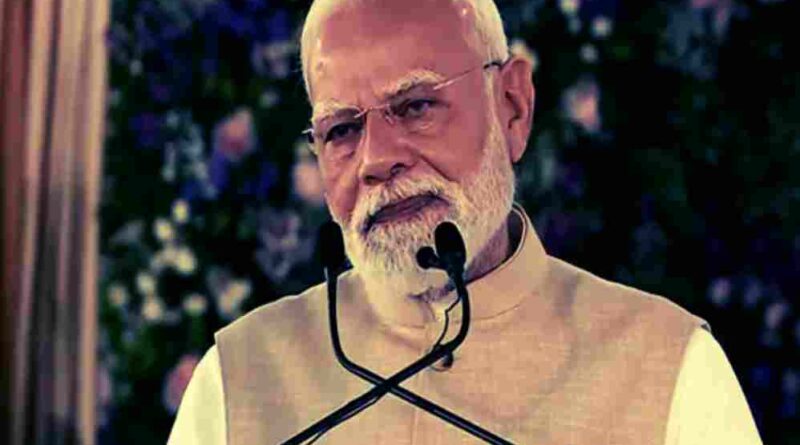World Will Drive EVs ‘Made in India’: A New Chapter in the Nation’s Journey
On August 26, 2025, a defining moment unfolded in Gujarat as India stepped boldly into the future of sustainable mobility. At the Hansalpur plant, the country witnessed the launch of the Maruti Suzuki e-Vitara—a global electric vehicle that not only promises to revolutionize Indian roads but is also set to reach international markets.
Prime Minister Narendra Modi, addressing the inauguration, declared with conviction that the world will soon be driving cars proudly labeled “Made in India.” His words were more than a celebration of a new product; they were a vision for India’s position on the global stage.
India as a Global EV Hub
The launch of the e-Vitara marks the beginning of India’s journey as a global hub for electric vehicles. The Hansalpur plant, with an annual capacity of 1 million units, is not just an industrial facility—it is a symbol of India’s manufacturing strength and future aspirations.
Suzuki Motor Corporation has committed an investment of nearly ₹70,000 crore over the next five to six years, underlining a long-term plan to position India as a key player in the international EV ecosystem. The e-Vitara, which will compete with leading global models, is set for export to more than 100 countries, establishing India as a serious contender in sustainable mobility.
Building the EV Ecosystem from the Ground Up
Behind every electric vehicle is a powerful battery—and India is determined to localize this critical component. Alongside the vehicle launch, a lithium-ion battery plant was inaugurated in Gujarat, developed as part of a joint venture between leading Japanese firms and Indian partners.
This facility will not just assemble batteries but manufacture key components like electrodes locally, pushing localization levels close to 80 percent. By reducing dependence on imports, India is laying the foundation for a self-reliant EV ecosystem, which will also make vehicles more cost-effective in the long run.
Policies, People, and Pride
Prime Minister Modi credited India’s journey to years of consistent reforms and infrastructure growth. Industrial corridors, logistics hubs, and manufacturing-friendly policies have paved the way for global investments. But beyond policies, the Prime Minister highlighted something more powerful—India’s Swadeshi spirit.
He emphasized that no matter where the capital comes from, products made by Indian hands on Indian soil carry the essence of being truly Indian. This fusion of global investment with local effort is creating a new kind of Swadeshi—modern, ambitious, and future-ready.
More Than Just Cars: A Future-Ready India
While the e-Vitara was the headline of the day, the event also revealed the government’s broader vision.
- Hybrid Ambulance Prototype: Maruti Suzuki showcased an innovative hybrid ambulance, developed in record time, aligning with the government’s PM E-Drive scheme. This highlights that India’s EV revolution is not just about commercial mobility, but also about humanitarian innovation.
- Semiconductor Mission: India is also accelerating work in semiconductors, with six plants expected to go live soon. This is crucial for ensuring that India not only makes vehicles but also the chips that power them.
- Critical Mineral Exploration: The launch of the National Critical Mineral Mission further cements India’s green future. With over 1,200 exploratory missions planned across the country, the goal is to secure rare minerals vital for batteries and renewable technologies.
The Global Road Ahead
India is already the world’s fourth-largest car market, but this shift signals a transformation from being an automobile consumer base to becoming an automobile innovator and exporter. Maruti Suzuki, already the top car exporter from India for four consecutive years, will now lead the charge into EV exports.
The Prime Minister’s vision is clear: India will not merely participate in the global EV transition—it will drive it. With investments flowing in, technology being localized, and policies aligned with sustainability, India is poised to stand at the forefront of the world’s green mobility revolution.
In Conclusion
The unveiling of the e-Vitara is not just about the launch of a new car—it is about the birth of an era. An era where India’s manufacturing might, youthful workforce, and sustainable ambitions come together to create solutions for the world.
Soon, when families in Europe, Asia, or Africa plug in their electric cars at night, there’s a strong chance those vehicles will carry a badge that says proudly: Made in India.
Disclaimer
The information and content shared on digitalgithub.com — including articles, blogs, news, guides, and other resources — is intended for general informational and educational purposes only. We do not guarantee the completeness, reliability, or suitability of any information. Always seek the guidance of a qualified professional before making decisions based on the information you read. Use this site at your own risk.

